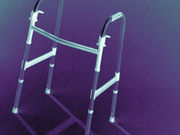Imaging gives insight into neurological changes that make falls more likely, researchers say
THURSDAY, Dec. 8, 2016 (HealthDay News) — Measurements of healthy older adults’ brain activity may help determine their future risk of falls, according to a study published online Dec. 7 in Neurology.
The new research involved 166 seniors averaging 75 years of age with no disabilities, dementia, or difficulty walking at the beginning of the study. All of them underwent brain imaging to assess activity in the prefrontal cortex of the brain while they performed specific tests: walking, reciting alternate letters of the alphabet, and then doing both at the same time.
Over four years of follow-up, 71 of the participants (43 percent) reported a total of 116 falls, and 34 of them fell more than once. Most of the falls were minor, with only 5 percent resulting in fractures, the researchers said. Higher levels of brain activity in the combined “walking and talking” test were associated with a higher risk of falls, with each incremental increase in brain activity linked with a 32 percent higher risk of falling. This association remained even after the researchers accounted for other fall risk factors, such as slow walking speed, frailty, and previous falls. There was no link between fall risk and brain activity levels while either just walking or talking.
“Prefrontal brain activity levels while performing a cognitively demanding walking condition predicted falls in high-functioning seniors,” the authors write. “These findings implicate neurobiological processes early in the pathogenesis of falls.”
Copyright © 2016 HealthDay. All rights reserved.








